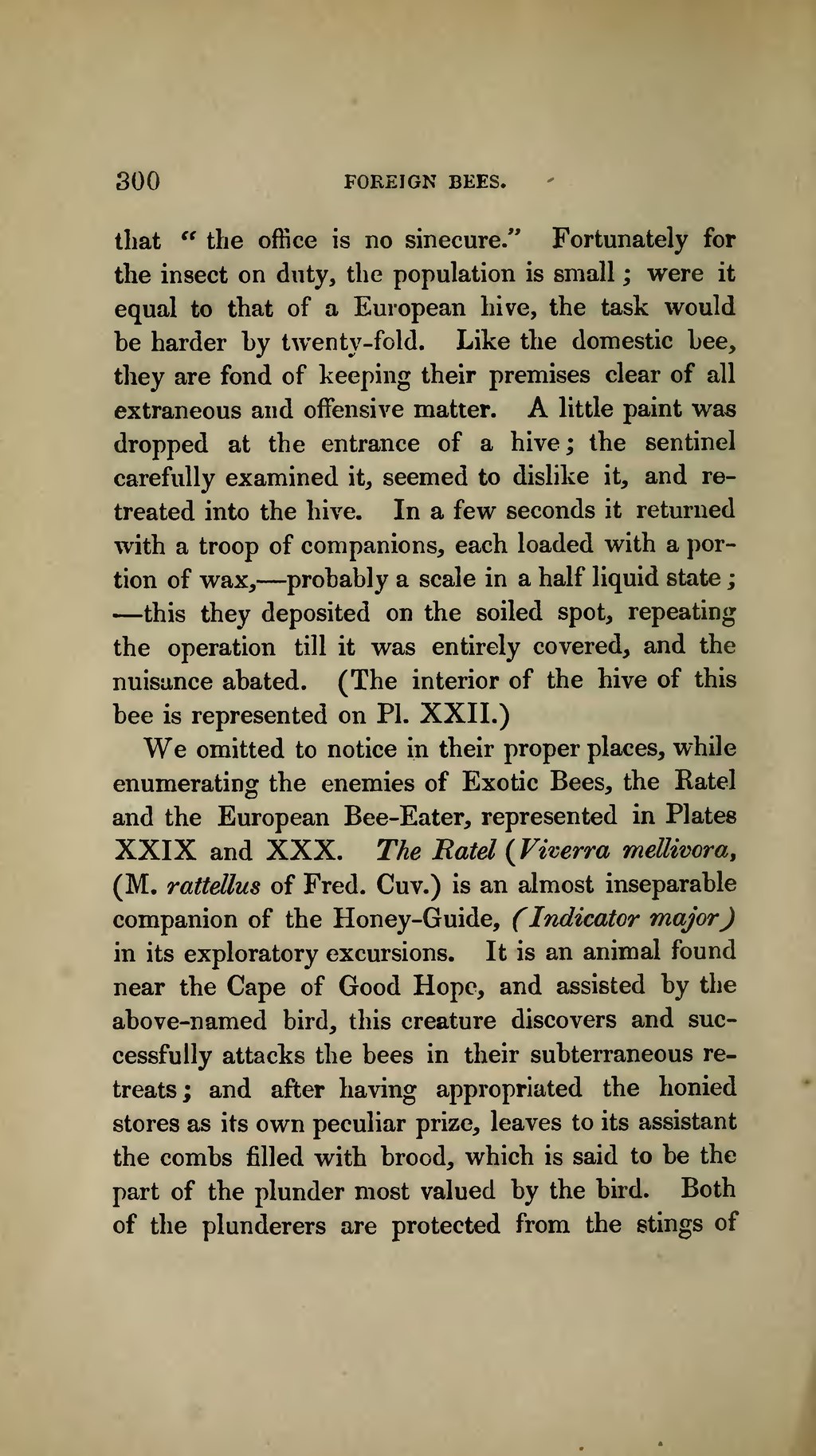that "the office is no sinecure." Fortunately for the insect on duty, the population is small; were it equal to that of a European hive, the task would be harder by twenty-fold. Like the domestic bee, they are fond of keeping their premises clear of all extraneous and offensive matter. A little paint was dropped at the entrance of a hive; the sentinel carefully examined it, seemed to dislike it, and retreated into the hive. In a few seconds it returned with a troop of companions, each loaded with a portion of wax,—probably a scale in a half liquid state;—this they deposited on the soiled spot, repeating the operation till it was entirely covered, and the nuisance abated. (The interior of the hive of this bee is represented on Pl. XXII.)
We omitted to notice in their proper places, while enumerating the enemies of Exotic Bees, the Ratel and the European Bee-Eater, represented in Plates XXIX and XXX. The Ratel (Viverra mellivora, (M. rattellus of Fred. Cuv.) is an almost inseparable companion of the Honey-Guide, (Indicator major) in its exploratory excursions. It is an animal found near the Cape of Good Hope, and assisted by the above-named bird, this creature discovers and successfully attacks the bees in their subterraneous retreats; and after having appropriated the honied stores as its own peculiar prize, leaves to its assistant the combs filled with brood, which is said to be the part of the plunder most valued by the bird. Both of the plunderers are protected from the stings of
